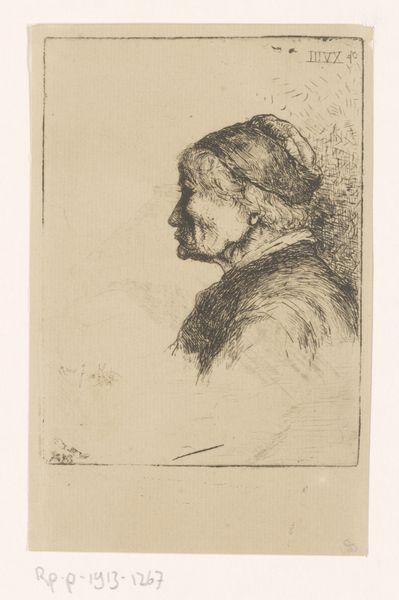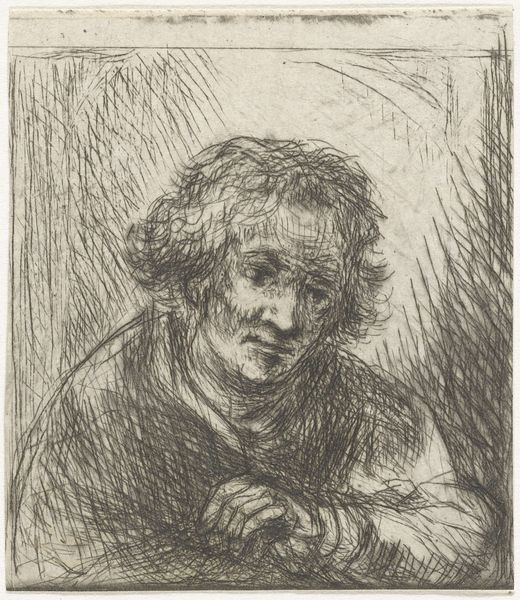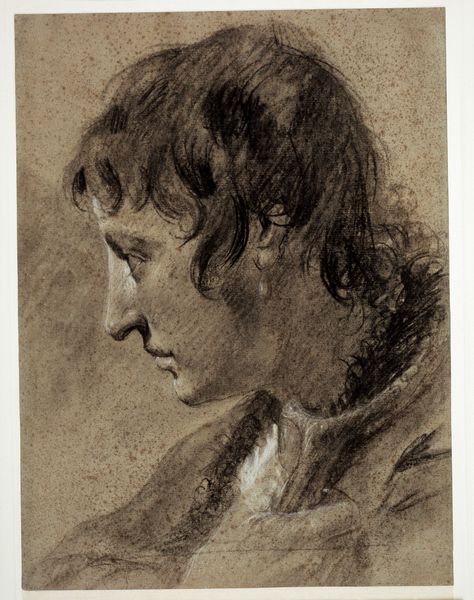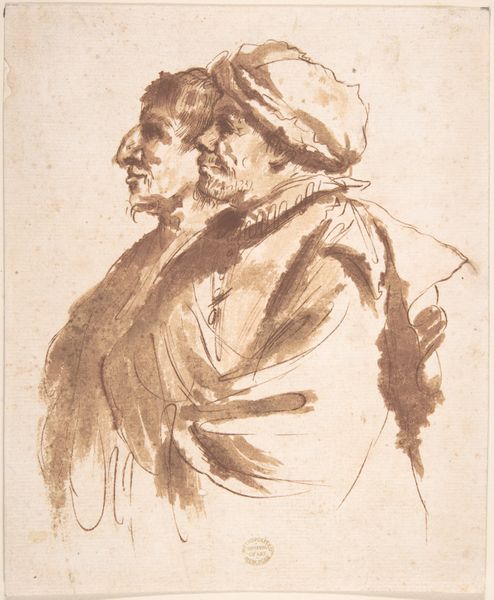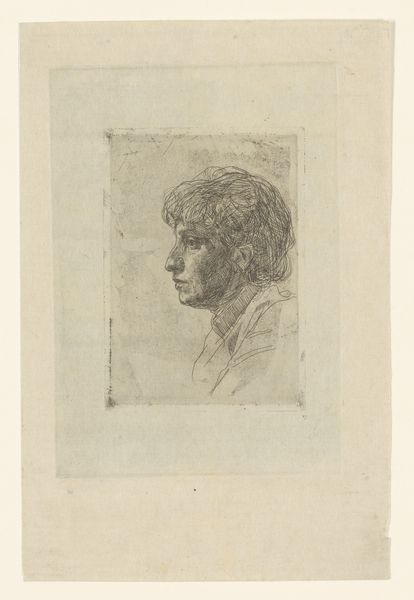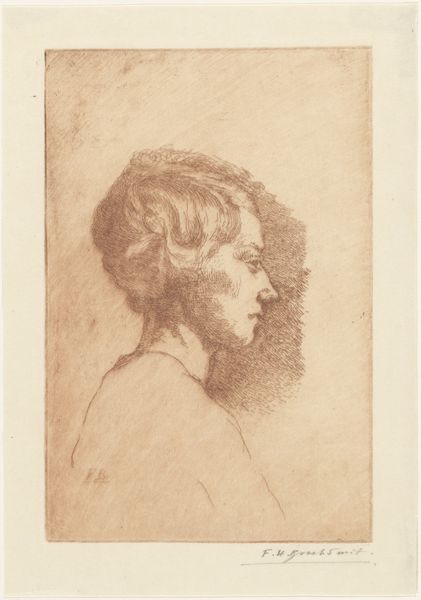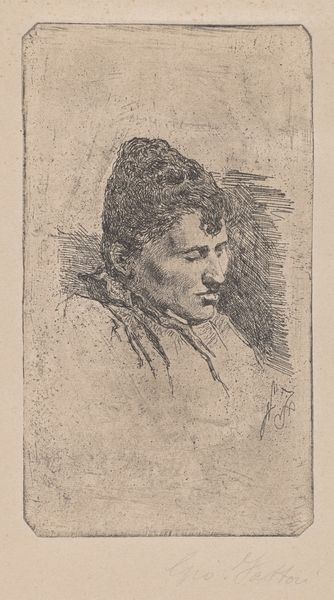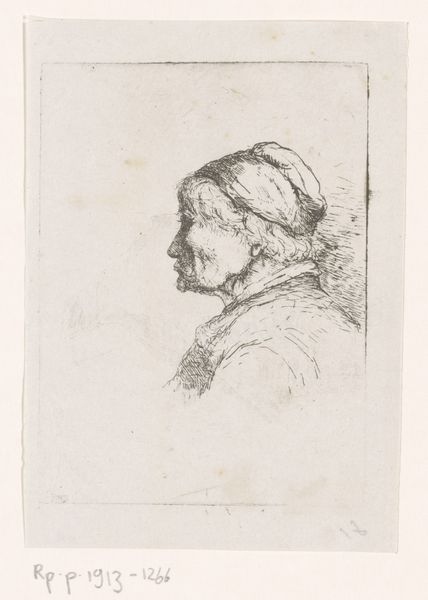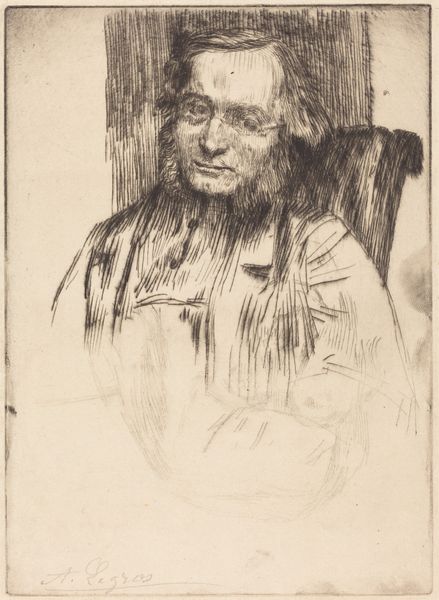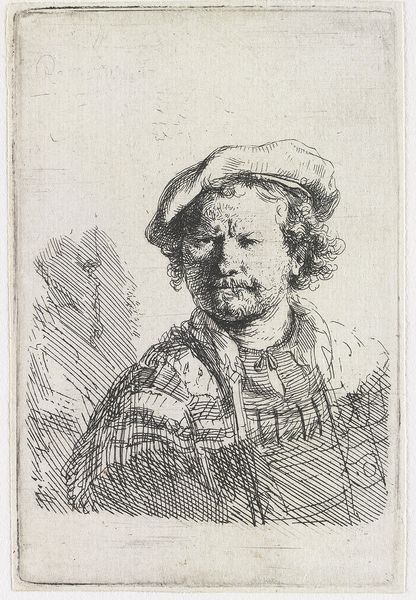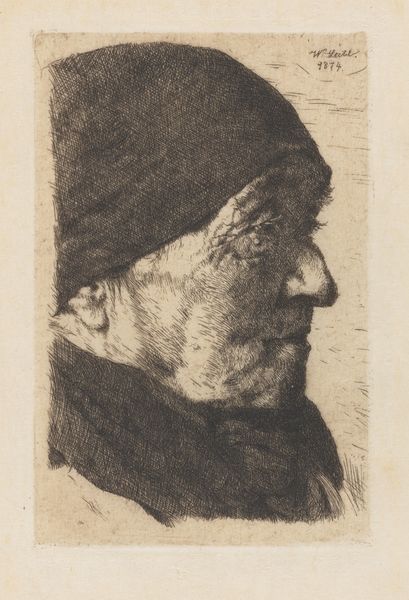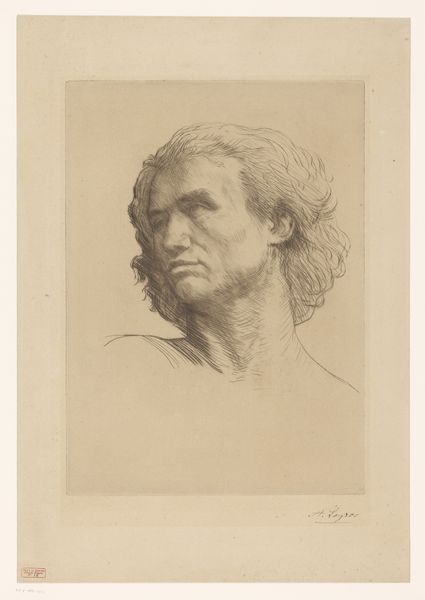
Dimensions: 8 x 5 in. (20.3 x 12.7 cm)
Copyright: Public Domain
Editor: This is Adolph Menzel's "Study of a Woman," created around 1888 using charcoal and pencil. It's a very intimate portrait. What stands out to me is the way Menzel used such simple materials to create such a detailed and compelling likeness. How do you interpret this work, considering the medium he chose? Curator: Menzel's choice of charcoal and pencil is indeed telling. Think about the context: late 19th century, industrialization booming, and art materials becoming increasingly standardized and accessible. His preference for these readily available, almost quotidian materials suggests an interest in grounding his art in the everyday experience. This contrasts sharply with the academic emphasis on oil paint as the superior medium for serious portraiture. Editor: So, you're saying it's less about high art and more about accessibility, maybe even a statement against the art establishment? Curator: Precisely! Consider also the labor involved. Drawing, particularly with charcoal, demands direct, physical engagement. You’re building up tones layer by layer, erasing, redrawing – it’s a very process-oriented medium. This foregrounds the artist's hand, the physicality of art-making itself. Where would the labor used to generate the artistic materials have been focused in 1888 Germany? Editor: Okay, I see what you mean. It's not just *what* is depicted, but *how* it’s made that carries meaning. The texture in the drawing feels very personal. What is the likely texture of the paper on which the drawing was made, in your opinion? Curator: Definitely. A laid paper. Notice how the very act of creation – the selection of material, the marks left, the exploitation of cheap or recycled supplies—reveals the human presence, not just in the subject, but also the artist himself. Menzel wasn’t merely recording a likeness; he was engaging with materials that reflect a broader social and economic reality. The art becomes embedded in a particular set of class relations of consumption. Editor: This really shifts my understanding of the piece. It makes me appreciate the 'Study' in a totally new light. The simple supplies speak volumes. Curator: Agreed. And it encourages us to see the relationship between art and the conditions of its production and social consumption.
Comments
No comments
Be the first to comment and join the conversation on the ultimate creative platform.
